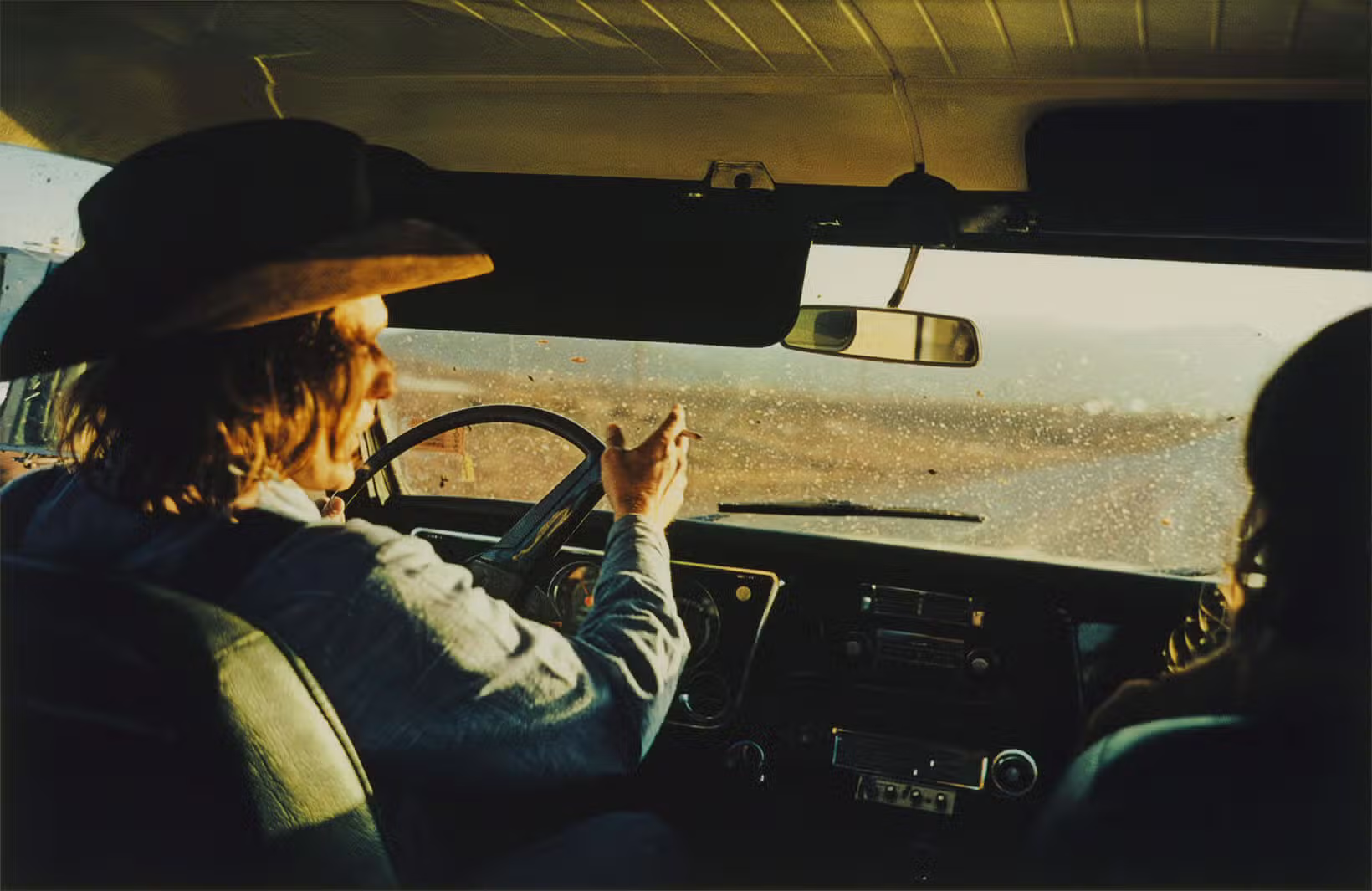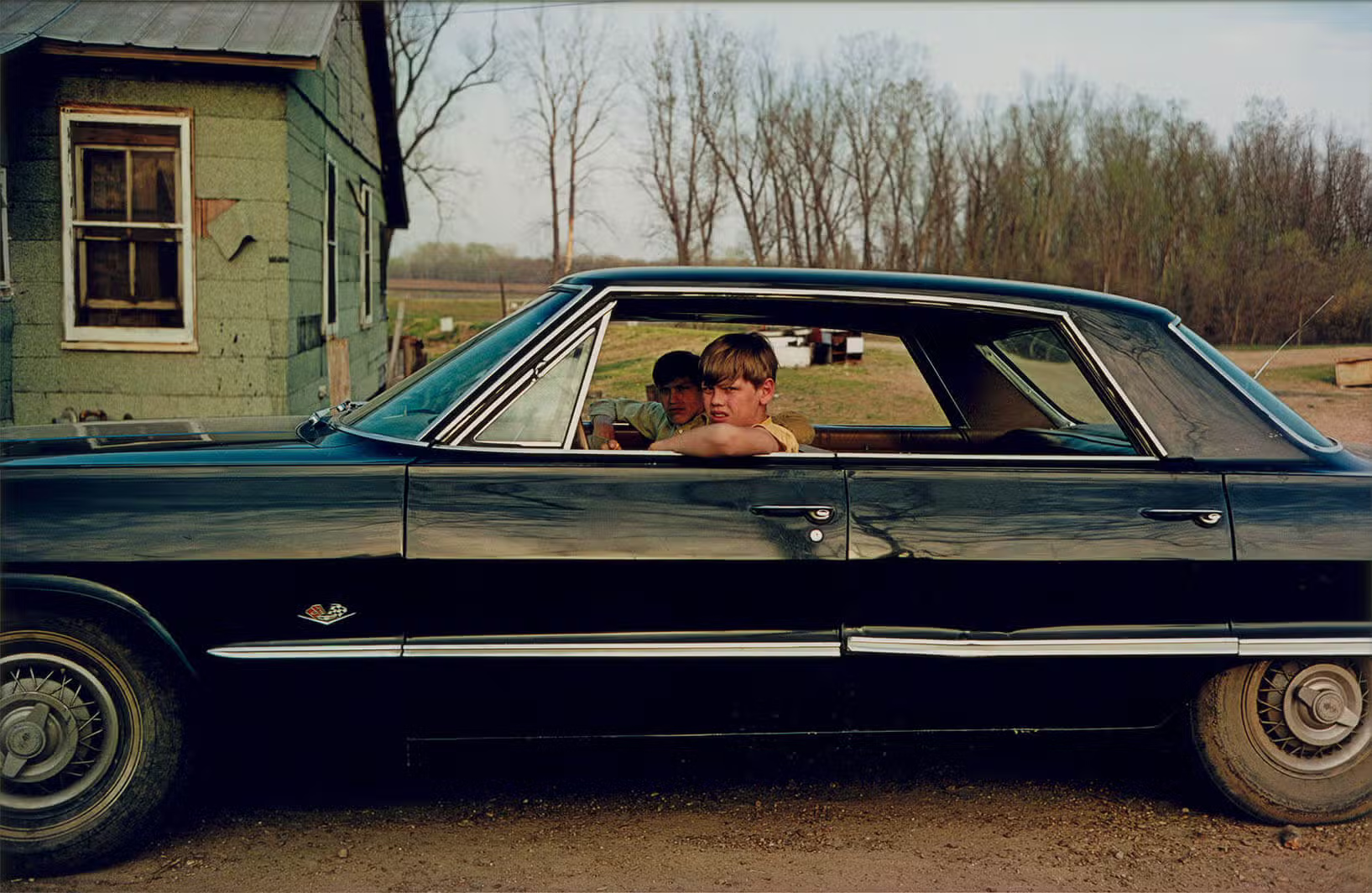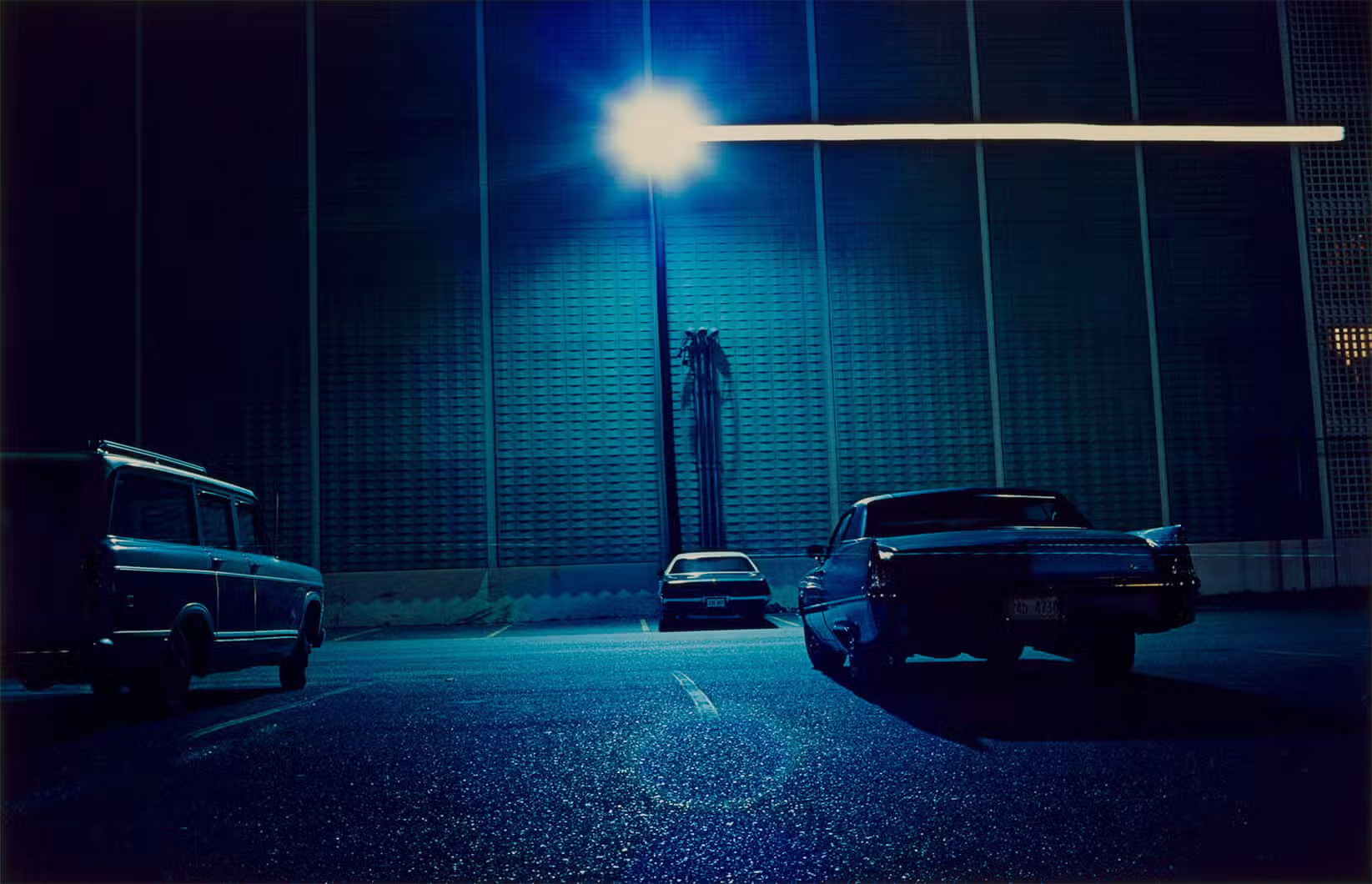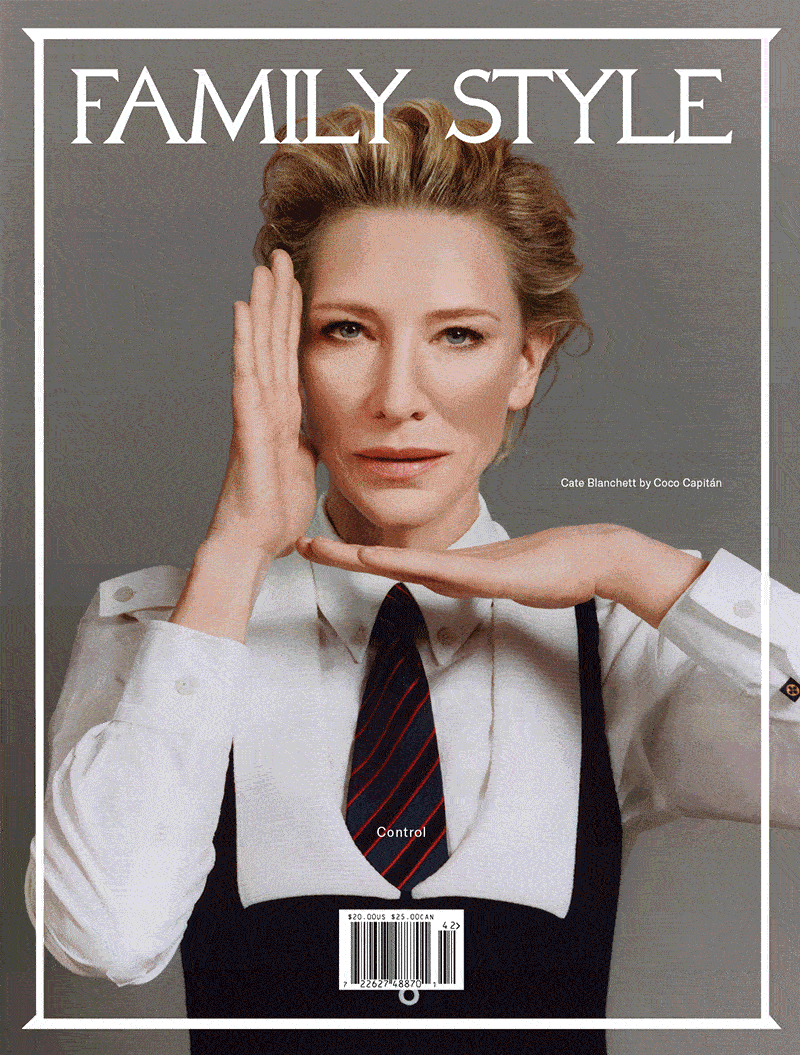Sunlight pours through the splattered window of the car and washes the side profile of the man in the driver’s seat, a cigarette raised in gesticulation above the wheel, brown hair pouring from his cowboy hat. Immersed in a torrential flood of light, the intimate scene in Untitled, 1972, is both euphoric and characterized by a hopeful longing. On display at David Zwirner Los Angeles, it is part of “The Last Dyes,” the new, and final exhibition of dye-transfer prints by the great William Eggleston.
The “godfather of color photography” still lives in Memphis, Tennessee, where he was born in 1939. This continuity suits the artist whose six-decade career has formed around a unified language of saturated colors, spontaneous compositions, intimate subjects—an Eggleston photograph immediately announces itself. His images are true art pieces, the first colored photos to be considered as such.
The exhibition, part of “PST ART: Art & Science Collide” programming presented by the Getty, is composed of works from two iconic Eggleston series, “Outlands” and “Chromes,” along with images from his pioneering and controversial 1976 exhibition of colored photographs at the Museum of Modern Art. The images on view date back to his journey through the American South and West between 1969 and 1972, and were selected with the help of his two sons. It was at the end of this period that Eggleston discovered his dye-transfer process––an intricate procedure in which photographs are split into three film matrices, submerged in a multi-colored dye bath, and pressed onto fiber paper––developed by Kodak in the 1940s for fashion and commercial photography. In the early ‘90s, when the film manufacturer stopped producing the materials for dye-transfer printing, Eggleston, along with two dye-transfer specialists and collaborators, began salvaging the remaining supplies. The last of which has now been used to print this current collection of images.
In Untitled, 1971, two boys sit in the front of a sleek, navy corvette, their pensive faces adorned with age beyond their years. They are surrounded by a dilapidated rural scene shrouded in crisp, overcast autumnal hues. In Untitled, 1972, a desolate parking lot is soaked in dark blue tones, while an angelic white light brightens the cars below in triangular formation and saturates the composition. These images display the techniques of the quintessential Egglestonian photograph: instinctive spontaneity due to his infrequent use of a viewfinder, the poetic normalcy of Southern scenes, and the chromatic depth of his pictures.
“The Last Dyes” is the concluding display of a revolutionary artist’s original method of presentation. A final collection of dye-transfer prints encompassing an oeuvre that, by the grace of the artist’s eye and his felicitous method, helped form a genre of art. These are true scenes of life, beautifully composed in colored composition, and as effortless as the moments in which they occur.
William Eggleston: Last Dyes is on view from November 16, 2024 through February 1, 2025 at David Zwirner Los Angeles, 606 N Western Avenue, Los Angeles, CA, 90004.









